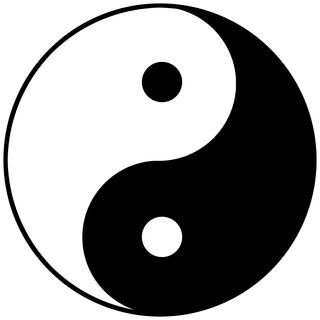Attention
Homeostatic Consciousness: A New Approach to an Old Problem?
Consciousness might be understood physically in terms of metabolic processes.
Posted May 11, 2021 Reviewed by Jessica Schrader
Key points
- Homeostasis could explain consciousness in physical terms.
- The biological roots of consciousness are deeply related to emotions.
- Attention does not depend on homeostasis and can explain many types of unconscious reasoning.
Homeostasis is the critical biological process through which the constant regulation of biochemical signals and functions is achieved at equilibrium. The most important functions in humans for regulating and monitoring vital metabolic processes are all homeostatic, such as body temperature, oxygen, blood pressure, and glucose regulation. In fact, homeostatic functions are so fundamental for the sustenance of life that many fatal diseases can be described as failures of homeostasis, such as diabetes. Mark Solms argues in his important book The Hidden Spring that our conscious experience, grounded in our emotions, is regulated in a similar homeostatic fashion. How can this rich subjective experience (i.e., phenomenal consciousness) be reduced to a homeostatic process?
To help illustrate this idea, let’s look at the relation between temperature regulation in mammals and the regulation of emotions. Mammals regulate their core temperature through the hypothalamus and a set of distributed sensors around their bodies. Like other homeostatic systems, the mechanism responsible for core temperature regulation involves a specific brain region that communicates with the rest of the body, in this case, via the autonomic nervous system (mostly through the sympathetic branch). There are other homeostatic systems that interact with the temperature regulation system, and all of them must interact in unison in order to achieve optimal living conditions while also responding rapidly to urgent internal or external changes. When it comes to emotions, as Solms points out, the basic idea is that equilibrium feels good (e.g., predictive functions are working well), while disequilibrium feels bad (e.g., uncertainty is prevailing). Presumably, this “bad feeling” urges a change that would help the system return to a better-feeling equilibrium state.
Now consider the fight-or-flight response. When an organism perceives life-threatening danger, the sympathetic branch of the autonomic nervous system responds immediately by producing drastic changes in heart rate, blood pressure, and electrodermal activity. Temperature regulation initiates by controlling breathing and sweat as the organism struggles to stabilize from such changes while trying to overcome the urgent situation. This specific response also interacts with very strong emotions, such as pain, fear, and stress. This relation between phenomenally conscious emotions and the autonomic nervous system is critical for our purposes because it demonstrates the homeostatic role of experienced emotions. In the standard philosophical lingo, such an experience is the basis of “what it is like” to be an organism.

We will not discuss here the details about where exactly in the brain this basis for conscious emotion regulation occurs, but rather focus exclusively on the idea of homeostasis. Fear, for instance, is deeply related to the fight-or-flight response. One may even say that fear is the phenomenally integrated aspect of the response, engaging not just the physiological mechanisms that sustain life but also the cognitive resources of the entire organism, channeling all of these resources and attention towards arriving at the optimal response. Thus, the phenomenal experience of fear is similar to homeostatic temperature regulation because it is flexible in responding to threats from the environment, yet stable enough to guarantee not only actual but also potential engagement through learning. Intense fear stops when the system reaches the required equilibrium, like any other homeostatic system. From this perspective, even the phenomenology of fear and other emotions supports a homeostatic account.
Solms, who is also trained as a psychoanalyst, explains the fundamental role that unconscious cognition plays in perception, planning, and memory. This is crucial to understand an important nuance of his view. The refined contents of our thoughts, beliefs, and plans may all occur unconsciously. This is why the notion of unconscious attention is so important to understand the mind (we go into more detail in a previous post). What is unique about consciousness is its valence structure, grounded on homeostasis. Emotions and their “raw feel” is the substance of consciousness—a deeply visceral and biological aspect of our minds. We are “conscious homeostats,” and given the basic features of our emotions, one wonders if consciousness evolved before the more refined forms of thoughts, such as long-term action planning and conceptual contents.
According to Solms, it is likely that consciousness is indeed reliant on a more “primitive” region in the brain, the brain stem, which also supports valence judgment and visceral responses that help regulate homeostasis in unpredictable contexts (see Solms, 2019). In other words, affective consciousness can complement the predictive functions of the brain in times of uncertainty to help it reach a state of equilibrium (which can also facilitate learning). Interestingly, this can be described by physical laws, such as entropy and the minimization of free energy in self-organizing systems, in this case the nervous system (and Solms calls on the work of Karl Friston to support his view on homeostasis).
We want to highlight two implications of Solms’s view. As we pointed out in a previous post, artificial intelligence need not be conscious and probably cannot ever be conscious because of the importance of biological homeostasis. This is because, on our approach, there is a more fundamental and general distinction between consciousness and attention. Therefore, the consciousness and attention dissociation framework is not only compatible with Solms’s view, but it also explains further implications of his account. For instance, this dissociation framework elucidates the difference between homeostatic-dependent conscious awareness of time and phenomenally unconscious time perception (Montemayor, 2017), among other dissociations (e.g., color detection versus color perception). The key aspect of the consciousness-attention dissociation is the information processing role of attention that does not rely on consciousness, but may require a “primitive” form of consciousness in assessing a homeostasis of this information processing. This is a theoretical possibility that needs to be studied in more detail.
The functional role of consciousness continues to be debated and we still don’t have a definitive answer. It does, however, seem to play an important role for determining situational valence and processing this affective information to encourage homeostasis. This is particularly important when the brain’s predictive functions are lacking, which ultimately can help with learning and improving predictions. While attention and the information processing within it does provide contents for consciousness, this homeostatic function is likely another area where attention and consciousness are dissociated.
Harry H. Haladjian and Carlos Montemayor
References
Montemayor C. & Haladjian, H. H. (2015). Consciousness, Attention, and Conscious Attention. Cambridge, MA: MIT Press.
Montemayor C. (2017). Conscious awareness and time perception. PsyCh Journal, 6(3), 228–238. https://doi.org/10.1002/pchj.173.
Solms, M. (2019). The Hard Problem of Consciousness and the Free Energy Principle. Frontiers in Psychology, 9:2714. https://doi.org/10.3389/fpsyg.2018.02714.
Solms, M. (2021). The Hidden Spring: A Journey to the Source of Consciousness. W. W. Norton and Company.


